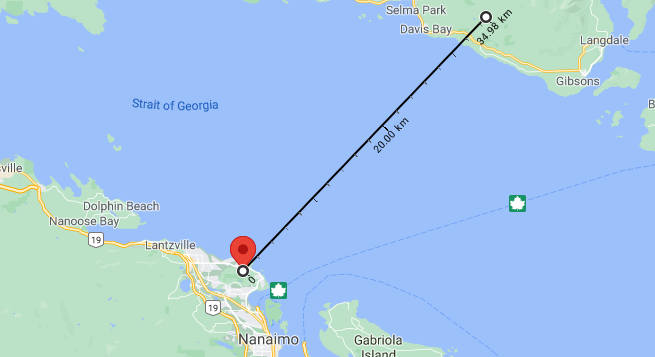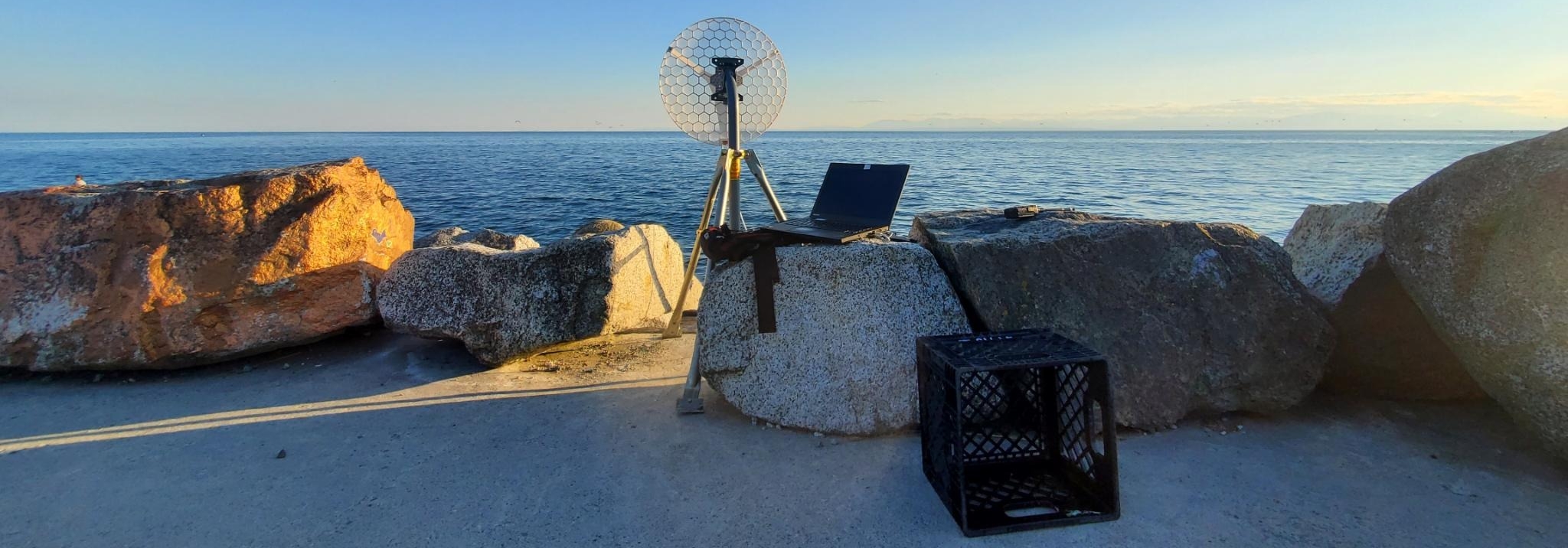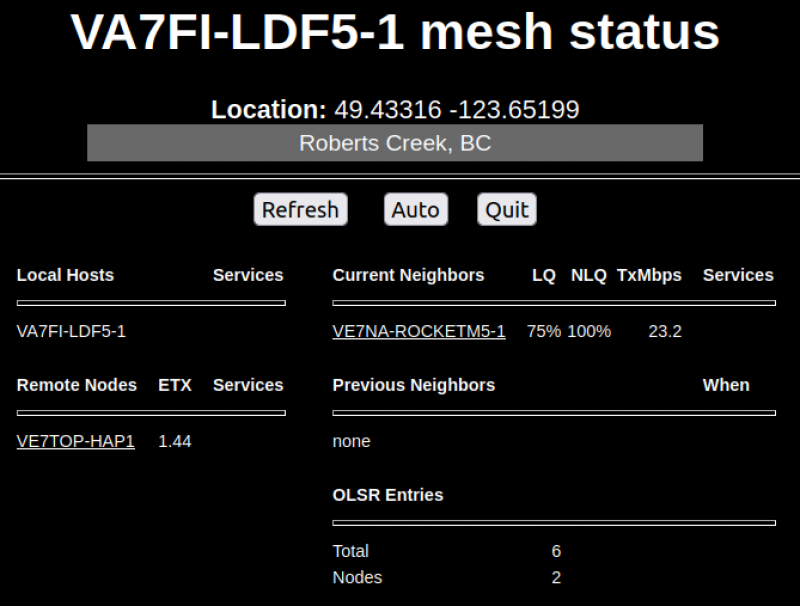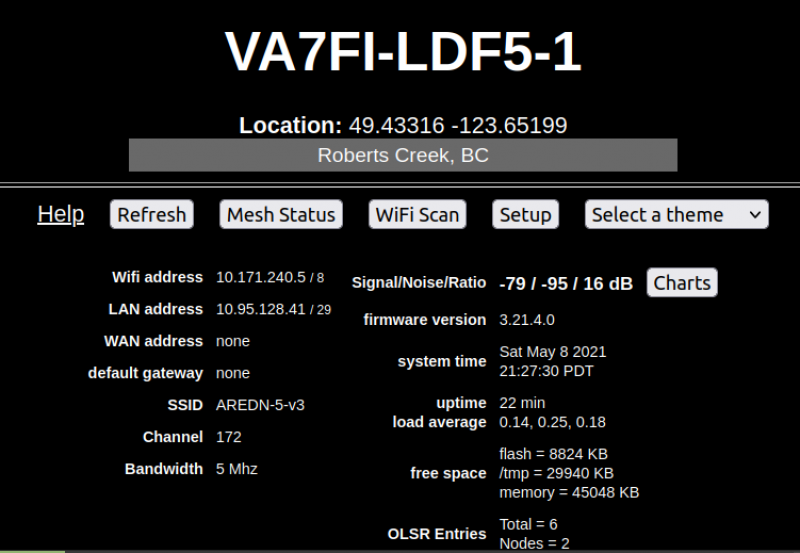Table of Contents
Patrick (VA7FI)
The goal is for my computers and IP phone1) to connect to other AREDN nodes. Currently, I achieve this via two different paths:
- via internet tunnels to VA7DXX, VA7ULD, and VE7RBE (which is not really ham radio), and
- via the 5.8 GHz band to one of the Mount Benson nodes on Vancouver Island.
My system also runs off of 12 V batteries so it (and my internet connection) continues to work during power outages. To easily connect different equipment in different ways, I created a “patch panel” using ethernet female-female connectors:
In the default configuration, everything is connected to the hAP. But I can very quickly connect my Winlink computer or the phone directly to the dishes to ensure I'm using RF.
July 1, 2021
July 4, 2021 Test
A few days later, Chris (VE7TOP) and I made a successful connection on 5.860 GHz (Ch. 172) between Nanaimo (49.227263, -123.975836) and Roberts Creek (49.45465, -123.64199): a distance of 35 km.


- Here's my setup and the view from the dish. The red circle marks the spot where Chris is. The log periodic was so Chris and I could talk on VHF to perform the adjustments.


These two tests show that it is possible to establish a connection between Nanaimo and the Sunshine Coast. The 120° sector antenna might be pushing it a little bit, but a 60° sector antenna would be enough to cover Gibsons through Halfmoon Bay and would offer an additional 4dB of gain over the 120° sector antenna.

Aug 1, 2021
Today, I managed to install my AREDN dish up the tree, run the CAT5 to the house, and connect it to the hAP. I started working at 7:45 this morning and finished around 5pm (after climbing up and down three times).
I aimed the dish roughly towards Mount Benson (222°), but unfortunately, I didn't manage to make a connection to the node there.
Oct 31, 2021
Yesterday, the folks on the Island went back to Mount Benson and adjusted the tilt on their antennas. After the adjustment, I started getting an intermittent signal. So today, I went back up the tree and used that signal to fine-tune the adjustment of my dish and managed to squeeze an extra 5-10 dB! Here's a graph of the signal before, during, and after the adjustment:

Unfortunately, it looks like I can hear the Mount Benson node 6-7 dB more strongly than it can hear me. I'm transmitting at 25 dBm. The equipment on mount Benson can transmit at 27 dBm.2)

Here's the status report pages for both nodes. It looks like I might be able to reach 1.6 Mbps, which is pretty impressive compared to VHF packet, but still pretty slow compared to the other stations.

Sept 29, 2022
This afternoon, Chris (VE7TOP), Devan (VE7LSE) and ran a few tests with a 60° sector antenna in Nanaimo and an LHG dish in Roberts Creek:

The results were very promising:
While I was there, I scanned the portion of the Island that I could see for other signals and was incredibly surprised that I could connect to a few other stations. From south to north:
Big thanks to Chris and Devan for their time and patience! 
Next test will be when the sector antenna is installed at Lost Lake. To be continued…
Footnote
 Using the coordinates for VA7ASI-Erskine-ASI and VA7ASI-Fernwood-Erskine, I can now see why I got such a good signal from the dish that's pointed north.
Using the coordinates for VA7ASI-Erskine-ASI and VA7ASI-Fernwood-Erskine, I can now see why I got such a good signal from the dish that's pointed north.











 : add details). After adjusting the dish's directions and elevations, the best signal strength I received was above -60dBm (which is pretty impressive!) with an SNR of over 35dB:
: add details). After adjusting the dish's directions and elevations, the best signal strength I received was above -60dBm (which is pretty impressive!) with an SNR of over 35dB: 
















